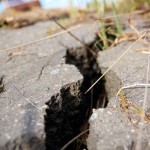

A California bill to close a loophole that enables building on active earthquake faults without considering the impacts passed a key committee hurdle on Thursday.
Senate Bill 1155, authored by state Sen. Ted Lieu, D-Redondo Beach, passed through the Senate Governance and Finance Committee on a 5-1 vote.
The bill was authored in response to recent revelations that buildings have been constructed on active earthquake faults with no geological survey or setback, according to Lieu.
“The state shouldn’t allow indiscriminate building on known active earthquake fault zones without considering building integrity and public safety,” Lieu said in a statement. “Without closing this gaping hole in current law, Californians are potentially in significant danger.”
 Under existing law, local planners and developers are required to take special considerations when building on or around an active fault. These requirements kick in once the state geologist maps the active fault pursuant to the Alquist-Priolo Act of 1972.
Under existing law, local planners and developers are required to take special considerations when building on or around an active fault. These requirements kick in once the state geologist maps the active fault pursuant to the Alquist-Priolo Act of 1972.
While California has at least 7,000 miles of known active earthquake faults, more than 2,000 miles of active faults continue to be exempt from any requirements.
Prompting Lieu’s bill was a recent series or artilcles by the Los Angeles Times that showed that officials had approved numerous residential and commercial projects in Los Angeles and Santa Monica where geologists have identified hazards for surface rupture, yet these faults had not been officially designated as earthquake fault zones pursuant to the Alquist-Priolo Act.
SB 1155 would extend the building requirements under the Alquist-Priolo to all active ruptured faults. The bill now heads to the Senate Committee on Appropriations.
Lieu, who chairs the Senate Business, Professions and Economic Development Committee, oversees a district that includes Beverly Hills, Carson, El Segundo, Hermosa Beach, Lomita, Manhattan Beach, Redondo Beach, Santa Monica, Torrance, West Hollywood and the Palos Verdes Peninsula as well as portions of Long Beach and Los Angeles.